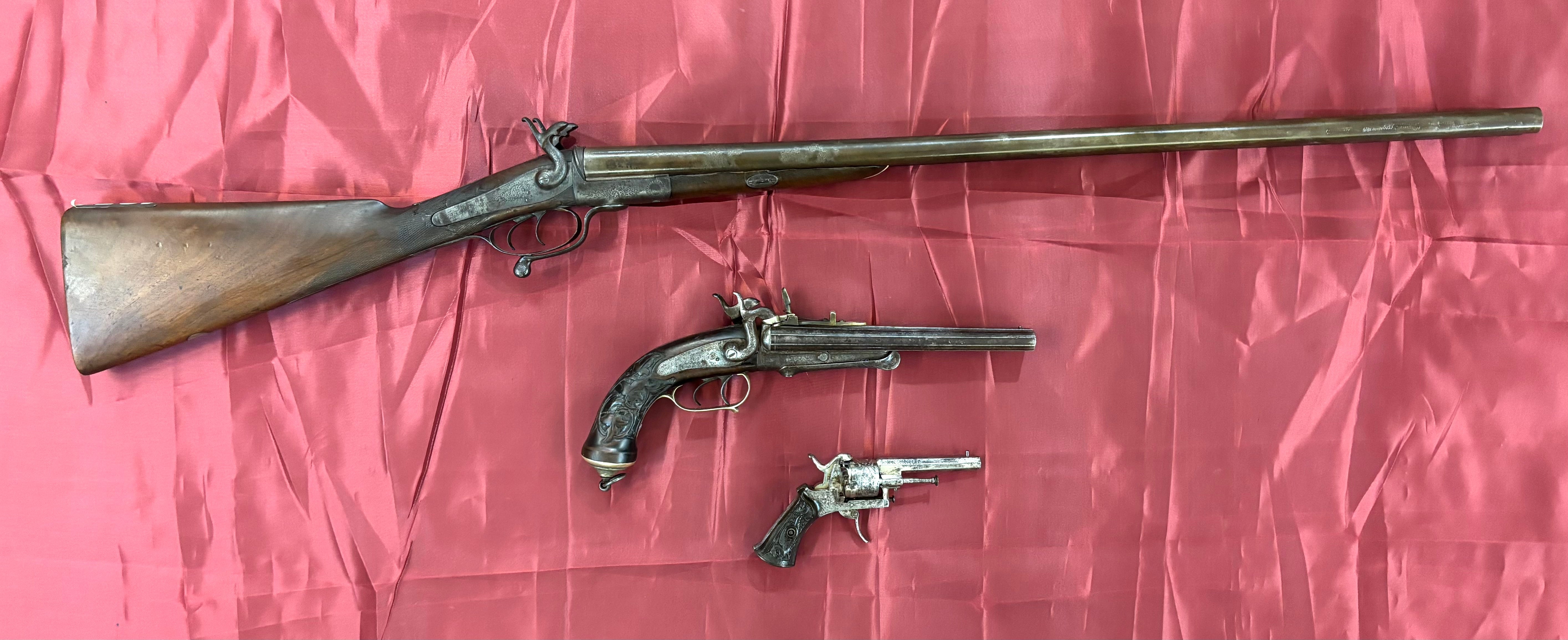
Pinfire Cartridges & Ammunition
This week for Firearm Friday we are spending some time on a cartridge rather than a specific firearm. Not Centerfire, not rimfire, the little known “pinfire” cartridge!.

The pin-fire is an obsolete type of metallic cartridge used in firearms, where the priming compound is ignited by striking a small pin that protrudes radially from above the base of the cartridge. Invented in 1832, it was one of the earliest practical designs of a metallic cartridge to hasten the loading and firing process of a firearm. Its history is closely associated with the development of the breechloader, which would eventually replace all muzzle-loading firearms.

The cartridge featured a small pin that, when struck, would ignite the priming compound and initiate the firing process. Despite initial resistance, especially from British gun users, the pinfire cartridge gained popularity following the Great Exhibition of 1851. Its advantages included easier and faster loading than percussion weapons, and it was more likely to fire reliably when wet. However, with the introduction of reliable rimfire and centerfire cartridges, which were quicker to load and safer, the pinfire cartridge became obsolete.

The Swiss gun maker Samuel Joannes Pauly patented the first breechloading cartridge in 1812. This was for use in a shotgun with fixed barrels which was loaded by lifting a breech block on the top. French gun maker Henri Roux attempted to improve this cartridge in the 1820s but a constantly primed cartridge was felt by many to be too dangerous and many breechloading guns reverted to using an unprimed cartridge. This was fired by a separate percussion cap which was used on the still dominant muzzle-loading guns.

Casimir Lefaucheux of Paris decided in 1832 to patent a breechloader where the barrel hinged downwards to reveal the breech ends. These still used a separate percussion cap. Though used before this, in 1835 he was granted an addition to the 1832 patent for a new type of cartridge in which the cartridge's priming compound is ignited by striking a small pin which protrudes radially from just above the base of the cartridge. These pins fitted into a small groove cut in the top of each barrel-end and made it easy to see if the gun was loaded. The interior side of the chamber served as an anvil so that the cap won't move, which was a problem in some early cartridge designs at the time. The cartridge used metal bases with paper tubes which were usually loaded by the shooter or his staff but were not entirely gas-tight. This reduced the force of the charge and allowed powder residue and gas to escape.

While pinfire rifles and shotguns began to decline in use from the early 1860s onward, after the introduction of mass-produced centerfire rifle and shotgun cartridges, pinfire revolvers in particular became very successful and widespread.

They were also widely used during the American Civil War. Some navies also adopted them for "sea service", these examples were often being made out of brass which is largely unaffected by the corrosion.
Pinfire became obsolete once reliable rimfire and centerfire cartridges became available because without a pin which needed aligning in the slot in the chamber wall they were quicker to load. They were also safer because they had no protruding pin which could cause the ammunition to accidentally detonate during rough handling, particularly of loose ammunition.

We have a limited number of firearms that are made for Pinfire ammunition and a few select Pinfire cartridges on display,
















